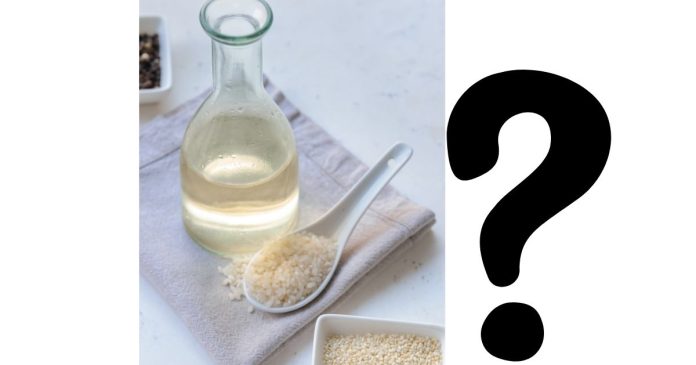Rice vinegar is a staple in many Asian cuisines, valued for its mild acidity and subtle sweetness. It is often used in dressings, marinades, sushi rice, and dipping sauces. But what if you’re in the middle of a recipe and realize you’re out of rice vinegar? Or perhaps you want to try something different? Fortunately, there are several substitutes for rice vinegar that can achieve a similar tangy flavor and balance in your dishes.
Let’s explore some common and effective rice vinegar substitutes, their taste profiles, and how they can be used in various recipes.
1. White Wine Vinegar
Best For: Salads, sauces, marinades, and Asian-inspired dishes.
White wine vinegar is one of the best substitutes for rice vinegar. Like rice vinegar, it has a mild and slightly fruity flavor, though it can be a bit sharper. It lacks the sweetness that rice vinegar offers, but this can be easily adjusted by adding a small amount of sugar or honey.
How to Substitute:
For every 1 tablespoon of rice vinegar, use 1 tablespoon of white wine vinegar. If you’d like to mimic rice vinegar’s subtle sweetness, add a teaspoon of sugar or honey to your dish.
2. Apple Cider Vinegar
Best For: Salad dressings, marinades, and dipping sauces.
Apple cider vinegar is a versatile and widely available substitute for rice vinegar. It has a slightly fruity and tangy flavor, making it a good match for recipes that require a bit of acidity. While it’s a bit more robust in flavor than rice vinegar, it can work well in many dishes.
How to Substitute:
For 1 tablespoon of rice vinegar, use 1 tablespoon of apple cider vinegar. If the apple cider vinegar is too strong for your taste, dilute it with a little water or mix it with a pinch of sugar to replicate the milder flavor of rice vinegar.
3. White Vinegar (Distilled Vinegar)
Best For: Quick pickles, marinades, and recipes requiring high acidity.
White vinegar is another common substitute, but it’s more potent and sharp compared to rice vinegar. It lacks the subtle sweetness and complexity of rice vinegar, so it might not be ideal for dishes like sushi rice or delicate salads. However, if you’re in a pinch, it can be a good replacement with the right adjustments.
How to Substitute:
Because white vinegar is more acidic, dilute it with water to soften its intensity. For every tablespoon of rice vinegar, use 1 tablespoon of white vinegar mixed with ½ tablespoon of water. If your recipe needs sweetness, add a pinch of sugar to balance out the flavors.
4. Lemon or Lime Juice
Best For: Dressings, marinades, and seafood dishes.
Lemon or lime juice can be an excellent substitute for rice vinegar when you need a tart and zesty flavor. Both citrus juices can provide a tangy punch and some acidity similar to rice vinegar, though they are more acidic and less sweet.
How to Substitute:
For every tablespoon of rice vinegar, use 1 tablespoon of lemon or lime juice. If you need to replicate rice vinegar’s slight sweetness, add a small amount of sugar or honey to your dish.
5. Balsamic Vinegar
Best For: Salad dressings, roasted vegetables, and glazes.
Balsamic vinegar is sweeter and thicker than rice vinegar, but it can still be a suitable substitute in certain recipes, especially if you’re looking to add depth of flavor. Its rich, slightly sweet flavor can work in salads or cooked dishes, though it may be too intense for sushi rice or other delicate Asian dishes.
How to Substitute:
For 1 tablespoon of rice vinegar, use 1 tablespoon of balsamic vinegar. Keep in mind that the flavor will be richer, so it may not work as well for dishes that require a lighter, more neutral vinegar flavor.
6. Sherry Vinegar
Best For: Mediterranean and Spanish recipes, dressings, and sauces.
Sherry vinegar offers a unique and sophisticated flavor that is milder than white vinegar but more complex than rice vinegar. Its slightly nutty and sweet undertones make it a great option for various savory dishes, although it may not match the specific taste of rice vinegar in all cases.
How to Substitute:
For every 1 tablespoon of rice vinegar, use 1 tablespoon of sherry vinegar. Sherry vinegar can be used without further adjustments in flavor, but you might want to add a touch of sugar if you’re aiming for the mild sweetness of rice vinegar.
7. Coconut Vinegar
Best For: Asian and tropical dishes, marinades, and pickles.
Coconut vinegar is made from the sap of coconut trees and is commonly used in Filipino and Indonesian cuisines. It has a slightly milder acidity compared to rice vinegar, with a subtle earthy flavor. It’s a great choice for dishes where a gentle vinegar flavor is desired.
How to Substitute:
Use 1 tablespoon of coconut vinegar for every tablespoon of rice vinegar. If the flavor is too earthy for your liking, mix it with a bit of sugar or honey to balance it out.
8. Tamarind Paste (in Small Quantities)
Best For: Asian sauces, soups, and curries.
Tamarind paste has a tangy and tart flavor that can act as an alternative to rice vinegar in certain recipes, particularly those with Asian or Indian flavors. It also provides a mild sweetness and can enhance the complexity of the dish.
How to Substitute:
Start with ½ tablespoon of tamarind paste for every tablespoon of rice vinegar, and adjust to taste. You may need to thin it with a bit of water or broth to achieve the right consistency for your recipe.



